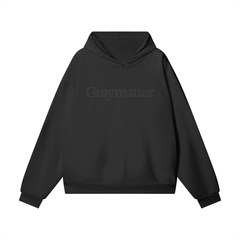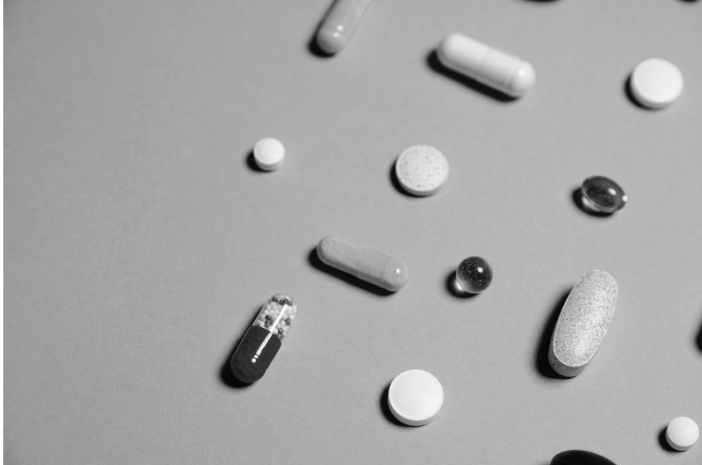If you're searching for information about what is Vyvanse, you're likely either considering this medication for yourself or trying to understand it better for someone you care about. Whether you're dealing with focus challenges, have been diagnosed with ADHD, or are exploring treatment options, understanding how this Vyvanse medication works is crucial for making informed decisions about your cognitive health.
Let's have an honest conversation about Vyvanse—what it does, how it works, and why many people are now seeking natural alternatives that provide similar benefits without the concerning side effects. The Attention Deficit Hyperactivity Disorder Handbook: A Physician's Guide to ADHD has long been a clinical reference for comparing ADHD medications, and today we'll give you that same comprehensive understanding in plain language.
What Is Vyvanse Prescribed For?
Vyvanse uses extend beyond what many people realize. While most commonly known as an ADHD medication, Vyvanse (lisdexamfetamine) is FDA-approved for two primary conditions:
-
Attention Deficit Hyperactivity Disorder (ADHD) in patients 6 years and older
-
Moderate to severe Binge Eating Disorder (BED) in adults
Here's a striking fact: Vyvanse was approved by the FDA in 2007 and has become one of the most prescribed ADHD medications in the United States, with over 9 million prescriptions written in 2022 alone. This explosive growth reflects both its effectiveness and the rising rates of ADHD diagnoses.
The Vyvanse prescription process typically begins when someone struggles with persistent focus issues, impulsivity, or hyperactivity that significantly impacts their daily life. For binge eating disorder, doctors prescribe it when behavioral interventions haven't been sufficient to control compulsive eating patterns. Notably, Vyvanse is the only FDA-approved medication for BED, which explains its widespread use beyond traditional ADHD treatment.
Public figures have helped normalize ADHD treatment discussions. TV host Ty Pennington and professional dancer Julianne Hough have both spoken publicly about using ADHD medications, including Vyvanse, to help manage symptoms and maintain focus during their demanding careers. This openness has helped reduce stigma, though it's also important to discuss the full picture of stimulant use.
How Does Vyvanse Work in the Body?
Understanding the Vyvanse mechanism helps explain both its effectiveness and its risks. Vyvanse is what's called a "prodrug"—meaning it's inactive when you take it and only becomes active after your body processes it.
Here's how it works:
-
Ingestion and Absorption: When you swallow Vyvanse, it travels to your digestive system as lisdexamfetamine
-
Conversion: Your red blood cells convert lisdexamfetamine into dextroamphetamine (the active form)
-
Brain Action: The dextroamphetamine increases levels of dopamine and norepinephrine in your brain
-
Effect Duration: This process creates a steady release lasting 10-14 hours
Here's fascinating trivia: Vyvanse's unique prodrug design means it can't be activated by crushing or dissolving, unlike some other stimulants. This conversion process is why Vyvanse has a lower abuse potential compared to immediate-release amphetamines—it can't be snorted or injected for a quick high because it needs to be metabolically converted first.
In clinical studies, this design showed impressive results. A 13-hour classroom study demonstrated that Vyvanse improved attention and behavior in children with ADHD for up to 13 hours after a single dose—making it one of the longest-acting ADHD medications available.
Is Vyvanse a Stimulant?
Yes, Vyvanse is classified as a Schedule II controlled stimulant, the same category as medications like Adderall and Ritalin. As a central nervous system stimulant, it works by increasing the activity of certain neurotransmitters in your brain.
However, calling it "just a stimulant" oversimplifies its complex effects on brain chemistry. Vyvanse specifically targets:
-
Dopamine systems: Enhancing motivation, focus, and reward processing
-
Norepinephrine pathways: Improving attention and alertness
-
Executive function networks: Supporting planning and impulse control
While these effects can be beneficial for managing ADHD symptoms, they come with significant considerations. The same mechanisms that improve focus can also lead to increased heart rate, blood pressure changes, and potential for dependence. Despite its prodrug status lowering abuse risk compared to other stimulants, Vyvanse remains a Schedule II controlled substance due to its potential for misuse.
What Are the Side Effects of Vyvanse?
Understanding Vyvanse side effects is essential for anyone considering this medication. While it can be effective, the side effect profile is extensive and varies significantly between individuals.
Common side effects include:
-
Decreased appetite and weight loss
-
Dry mouth
-
Insomnia or sleep disturbances
-
Increased heart rate
-
Anxiety or jitteriness
-
Digestive issues (nausea, constipation)
-
Dizziness
-
Irritability or mood changes
More serious side effects requiring immediate medical attention:
-
Chest pain or irregular heartbeat
-
Shortness of breath
-
Extreme mood changes or aggression
-
Signs of circulation problems (numbness, cold fingers/toes)
-
Unusual wounds on fingers or toes
-
Vision changes
-
Rare cases of mania or psychosis
-
Potential for sudden cardiac events in those with heart conditions
Long-term use concerns are particularly troubling. Research shows that extended stimulant use can lead to a 27% increased risk of cardiovascular disease after just 3-5 years of use. This statistic has many people reconsidering whether the benefits outweigh the risks.
Vyvanse Dosage: Finding the Right Balance
Vyvanse dosage comes in multiple forms to accommodate different needs:
-
Capsules: Available in 10-70mg strengths
-
Chewable tablets: Available in 10-60mg strengths
Standard dosing protocols include:
-
For ADHD: Typical starting dose is 20-30mg once daily in the morning
-
For BED: Starting dose is 30mg, titrated up to a maximum of 70mg/day
-
Timing: Always taken once daily in the morning to avoid insomnia
-
Titration: Increased by 10-20mg weekly until optimal response achieved
The challenge with Vyvanse dosing is that finding the "sweet spot" can take weeks or months of adjustment. Too little, and symptoms persist. Too much, and side effects become unbearable. Many patients report feeling like they're constantly chasing the right dose as their tolerance builds over time.
How Is Vyvanse Different from Adderall?
The Vyvanse vs Adderall comparison is one of the most common questions patients ask. While both are amphetamine-based stimulants used for ADHD, there are key differences:
Formulation differences:
-
Vyvanse is a single-enantiomer prodrug (dextroamphetamine)
-
Adderall is a mixture of amphetamine salts
Duration and onset:
-
Vyvanse lasts 10-14 hours with gradual onset
-
Adderall XR lasts about 12 hours with faster onset
-
Adderall immediate-release lasts 4-6 hours
Cost and availability:
-
Adderall is available in generic form and is less expensive
-
Vyvanse has only recently become available in generic form (lisdexamfetamine)
-
Brand-name Vyvanse remains significantly more expensive
Abuse potential:
-
Vyvanse's prodrug design reduces misuse risk
-
Adderall can be misused more easily through crushing or snorting
Pop culture has certainly noticed these medications. In the sitcom Community, Annie Edison's nickname "Little Annie Adderall" reflects how ADHD medications like Adderall and Vyvanse are woven into modern culture, sometimes with stigma and misunderstanding. This cultural awareness highlights both the prevalence of these medications and the ongoing conversations about their use.
Vyvanse for Binge Eating: Understanding the Connection
Vyvanse for binge eating represents a unique application of this medication. Clinical studies showed impressive results:
-
Reduced binge eating days per week significantly
-
Showed lower relapse rates six months after discontinuation
-
Helped control impulsivity around food
-
Regulated appetite through dopamine modulation
However, using a powerful stimulant to manage eating behaviors raises ethical and health questions. The appetite suppression that helps with binge eating is the same mechanism that causes unhealthy weight loss in many users. Plus, it doesn't address the psychological components of disordered eating.
Natural alternatives can support healthy eating patterns through gentler means:
-
Adaptogens help manage stress-related eating
-
Balanced neurotransmitter support reduces cravings
-
Sustained energy prevents the crashes that trigger binges
The Growing Concern: Why People Seek Alternatives
The statistics are sobering. With over 9 million Vyvanse prescriptions in 2022 and a 58% increase in ADHD stimulant prescriptions over the last decade, concerns about long-term effects are mounting. Global stimulant restrictions and awareness of cardiovascular risks have people actively seeking safer options.
Additionally, many people find that while Vyvanse helps with focus, it creates other problems:
-
The "zombie" feeling of emotional blunting
-
Difficulty eating enough to maintain healthy weight
-
Sleep problems that compound focus issues
-
The anxiety of depending on a controlled substance
-
Concerns about long-term brain changes
Consider the modern challenge: Americans now average over 7 hours of daily screen time. We need solutions that help us reclaim our attention without adding health risks.
Natural Alternatives: A Different Approach
This is where natural cognitive support enters the conversation. Instead of forcing your brain into overdrive with synthetic stimulants, plant-based nootropics work by nourishing your brain's existing systems. Graymatter's Bright Mind represents a new generation of cognitive support that addresses the root causes of focus issues without the harsh side effects.
The approach is fundamentally different:
Instead of depleting neurotransmitters, natural formulas provide the building blocks for sustainable production. L-Tyrosine, for example, is a precursor to dopamine that helps your brain maintain healthy levels naturally.
Rather than overstimulating, adaptogens like Rhodiola and Ashwagandha help manage stress—often an underlying cause of focus problems. When stress is managed, your natural focus abilities can shine through.
Instead of causing crashes, plant-based energy from sources like Korean Matcha provides smooth, sustained support without the peaks and valleys of synthetic stimulants.
What sets Bright Mind apart from other options? The numbers speak for themselves:
-
27 ingredients for daily vision support (vs. 4-12 in competitors)
-
3.95 grams of active ingredients per serving
-
Plant-based energy at just $1.49 per dose
-
Developed with PhD Molecular Biologists
The Science of Sustainable Focus
Understanding how to support focus naturally requires looking at the complete picture. Your ability to concentrate depends on:
-
Neurotransmitter Balance: Not just dopamine, but acetylcholine, GABA, and serotonin all play roles
-
Blood Flow: Your brain needs oxygen and nutrients delivered efficiently
-
Stress Management: Chronic stress destroys focus regardless of stimulant use
-
Energy Stability: Crashes and spikes disrupt sustained attention
Bright Mind's comprehensive formula addresses all these factors with ingredients like:
-
Alpha-GPC for acetylcholine support
-
Adaptogens for stress resilience
-
Plant-based energy for stability
Making an Informed Choice
Whether you're currently taking Vyvanse, considering it, or looking for alternatives, the key is making an informed choice that aligns with your long-term health goals. Consider:
If you're on Vyvanse: Work with your healthcare provider if you're interested in exploring alternatives. Never stop stimulant medication abruptly.
If you're considering Vyvanse: Weigh the potential benefits against the risks. Ask about trying natural options first, especially if your symptoms are mild to moderate.
If you're seeking alternatives: Look for comprehensive formulas that address multiple aspects of cognitive function. Bright Mind's Starter Kit offers an easy way to test natural cognitive support.
The Future of Focus: Beyond Stimulants
The landscape of cognitive enhancement is evolving. As we learn more about the brain and develop better natural compounds, the need for harsh stimulants may decrease. Already, many people are finding that with the right nutritional support, lifestyle changes, and natural supplements, they can achieve the focus they need without pharmaceutical intervention.
The key differences in approach:
Pharmaceutical stimulants like Vyvanse:
-
Force temporary changes in brain chemistry
-
Often create dependence
-
Carry significant side effect risks
-
Require ongoing medical supervision
-
May lose effectiveness over time
Natural cognitive support like Bright Mind:
-
Nourishes brain systems for sustainable function
-
Non-habit forming
-
Minimal side effects
-
Can be used long-term safely
-
Often becomes more effective with consistent use
Building a Sustainable Focus Practice
Whether you use Vyvanse or natural alternatives, sustainable focus requires more than just supplements or medication:
-
Quality Sleep: Your brain consolidates memories and clears metabolic waste during sleep
-
Regular Exercise: Physical activity boosts BDNF and improves cognitive function
-
Stress Management: Chronic stress undermines any focus intervention
-
Proper Nutrition: Your brain needs quality fuel to function optimally
-
Mindful Screen Time: With average daily screen time exceeding 7 hours, we need strategies to protect our attention
Natural supplements work best as part of this comprehensive approach, supporting your brain while you build healthier habits.
Frequently Asked Questions
Can you take Vyvanse and natural supplements together?
While some natural supplements may be safe with Vyvanse, always consult your healthcare provider before combining any substances. Some herbs and compounds can interact with stimulant medications.
How long does it take to transition from Vyvanse to natural alternatives?
This process should always be supervised by a healthcare provider. Typically, Vyvanse is tapered slowly while natural supports are introduced. The timeline varies greatly between individuals.
Do natural focus supplements work as quickly as Vyvanse?
Natural supplements work differently. While you may notice some immediate effects, the full benefits often develop over 2-4 weeks of consistent use as your brain systems optimize.
Are there age restrictions for natural focus supplements?
Most natural nootropics are formulated for adult use. Always check product guidelines and consult with a pediatrician before giving any supplements to children or teenagers.




Leave a comment